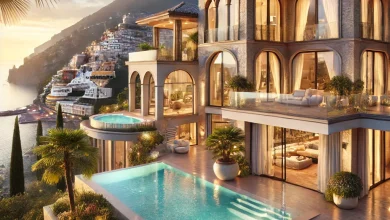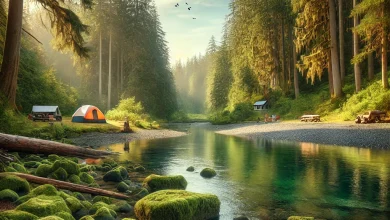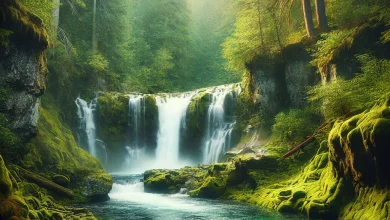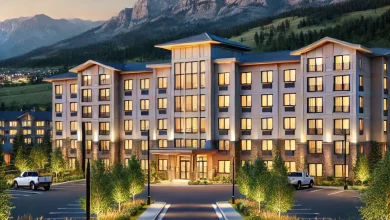Top 30 Tips to Capture Stunning Burj Khalifa Photos: A Guide to Mastering Dubai’s Iconic Landmark
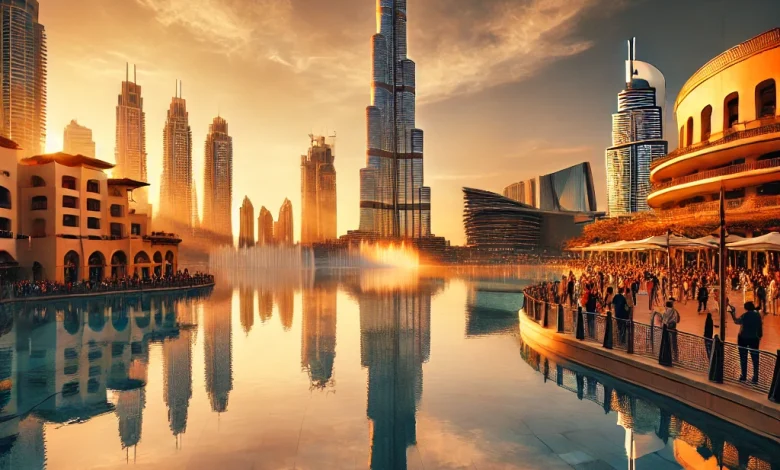
Table of Contents
The Burj Khalifa: A Photographic and Architectural Marvel
The Burj Khalifa, standing at a staggering height of 828 meters, is not just the tallest building in the world but also an architectural masterpiece that symbolizes Dubai’s ambition and innovation. Its sleek design, shimmering facade, and awe-inspiring height make it a dream subject for photographers worldwide. Whether you’re an amateur with a smartphone or a professional with high-end equipment, Burj Khalifa photos can elevate your portfolio and capture the essence of Dubai’s modernity and luxury.
Importance of Burj Khalifa in Photography and Tourism
The Burj Khalifa is a centerpiece of Dubai’s tourism and an icon recognized globally. Millions of tourists flock to Downtown Dubai annually to witness its grandeur, and for many, capturing stunning Burj Khalifa photos is a top priority. The building’s allure lies in its ability to look extraordinary from every angle, making it one of the most photographed landmarks on Earth. For photographers, it offers endless possibilities—from architectural close-ups to sweeping skyline shots.
Architectural and Design Highlights of the Burj Khalifa
The Design Philosophy
The design of the Burj Khalifa is inspired by traditional Islamic architecture, specifically the Hymenocallis flower. Its unique Y-shaped floor plan not only enhances the structural stability of the building but also optimizes the interior space for both residential and commercial use. This design creates a sense of symmetry and balance that makes it highly photogenic.
Material and Facade
The facade of the Burj Khalifa is constructed from reflective glass, aluminum, and stainless steel, giving it a shimmering appearance that changes with the light. This dynamic quality makes it a versatile subject for photography at any time of day or night.
Sustainability Features
The Burj Khalifa incorporates numerous sustainable technologies, including a condensate collection system that recycles water for irrigation. Photographers can highlight these eco-friendly features to add depth to their compositions.
Iconic Views of the Burj Khalifa
Best Angles for Capturing the Burj Khalifa
When photographing the Burj Khalifa, perspective is key. Its towering height can be challenging to frame, but with the right angle, you can create breathtaking compositions. Popular angles include:
- Low-angle shots from the base: These emphasize its height and intricate design.
- Wide shots that include surrounding landmarks: Incorporate elements like the Dubai Fountain or the Dubai Mall for context.
- Skyline views from elevated spots: Capture the Burj Khalifa amidst the bustling cityscape of Downtown Dubai.
Notable Features That Make It Photogenic
Several design elements make the Burj Khalifa uniquely photogenic:
- The spiraling design: Inspired by Islamic architecture, it creates an elegant symmetry.
- The glass facade: Reflects light beautifully, especially during sunrise and sunset.
- Nighttime illuminations: The LED light shows and periodic fireworks displays turn it into a glowing beacon.
Best Times to Capture Burj Khalifa Photos
Morning and Golden Hour Photography
The golden hour—shortly after sunrise or before sunset—is ideal for capturing warm tones and long shadows that highlight the tower’s texture. During early mornings, you may also encounter foggy conditions, creating ethereal shots of the Burj Khalifa rising above the mist.
Nighttime Views with the Illuminated Tower
The Burj Khalifa transforms at night with its LED displays and illuminated facade. Capture its glow against the dark sky or during the Dubai Fountain light shows for a dynamic composition.
Seasonal Photography Tips
- Winter mornings: Fog often blankets Dubai during the cooler months, making for surreal shots.
- New Year’s Eve: The Burj Khalifa hosts spectacular fireworks, offering once-a-year photo opportunities.
- Clear summer nights: While hot, these nights provide crystal-clear views of the illuminated skyline.
Popular Spots for Photography
Dubai Fountain Area
The Dubai Fountain, located at the foot of the Burj Khalifa, offers a perfect vantage point. Use the water’s reflection to add depth to your composition.
Souk Al Bahar Bridge
The bridge connecting Souk Al Bahar to the Dubai Mall provides a balanced view of the Burj Khalifa, framed by traditional Arabic architecture.
Downtown Dubai Viewpoints
Explore other viewpoints like the Sheikh Mohammed bin Rashid Boulevard or nearby parks for varied perspectives.
Helicopter or Drone Shots (If Permitted)
For a bird’s-eye view, consider booking a helicopter ride. Drone photography, while restricted in some areas, can provide breathtaking aerial shots of the Burj Khalifa with the Dubai skyline.
Tips for Taking Stunning Burj Khalifa Photos
Equipment Recommendations
- Camera: A DSLR or mirrorless camera with a high dynamic range and excellent low-light performance works best for capturing the Burj Khalifa, especially during nighttime or golden hour photography. Smartphones with advanced camera features like manual mode and RAW support can also deliver impressive results.
- Lens:
- Wide-angle lenses are ideal for capturing the full height of the Burj Khalifa and its surroundings. Look for lenses with a focal length of 10-24mm for APS-C cameras or 16-35mm for full-frame cameras.
- Telephoto lenses allow you to zoom in on intricate architectural details or capture unique perspectives from afar.
- Prime lenses with a wide aperture (e.g., 50mm f/1.8) are excellent for stunning bokeh effects when isolating the tower.
- Tripod: Essential for stability during long exposures or low-light photography. Choose a lightweight yet sturdy tripod for convenience and sharp results.
- Filters:
- ND (Neutral Density) filters for shooting during the daytime, especially when using long exposures to capture motion blur in crowds or water.
- Polarizing filters to reduce glare and enhance reflections from water or glass surfaces.
Framing and Composition Techniques
- Leading Lines: Use surrounding architectural elements, pathways, or roads to draw the viewer’s eye toward the Burj Khalifa. The symmetry of Downtown Dubai provides natural leading lines for compelling compositions.
- Rule of Thirds: Position the Burj Khalifa off-center to create a balanced and visually engaging shot. This technique works particularly well when including other elements like the Dubai Fountain or the skyline.
- Symmetry and Reflections:
- Utilize the symmetry of water features like the Dubai Fountain or nearby pools to create mirror-like reflections.
- Explore reflections on glass facades of adjacent buildings to add layers to your photo.
- Framing: Incorporate natural or architectural frames such as palm trees, arches, or bridges to add depth and context to your image.
Utilizing Reflections
Reflections can elevate your Burj Khalifa photos from ordinary to extraordinary:
- Water Features: Look for still water in fountains, pools, or even puddles after rain for crisp reflections.
- Glass Surfaces: Nearby skyscrapers and buildings often have reflective glass that can mirror the Burj Khalifa beautifully.
- Creative Angles: Get low to the ground or use a wide-angle lens to maximize the reflection in your frame.
Additional Tips for Creativity
- Layered Compositions: Combine foreground, midground, and background elements for a multi-dimensional photo.
- Play with Scale: Incorporate people or nearby structures to highlight the immense height of the Burj Khalifa.
- Silhouettes: Capture the tower as a silhouette against vibrant sunsets or sunrises.
- Light Trails: Use long exposures to capture car light trails in Downtown Dubai, with the Burj Khalifa as the backdrop.
Unique Photography Ideas
Capturing the Burj Khalifa with the Dubai Skyline
Combine the Burj Khalifa with other iconic landmarks like the Dubai Frame or Emirates Towers for a complete skyline shot.
Combining It with Cultural Landmarks
Juxtapose the modernity of the Burj Khalifa with traditional elements like abra boats on Dubai Creek or the wind towers of Al Fahidi Historical District.
Creative Perspectives
Get innovative by photographing the Burj Khalifa:
- From its base, looking straight up.
- Through architectural frames, such as arches or nearby modern structures.
Post-Processing Tips
Enhancing Colors and Lighting
Adjust brightness, contrast, and saturation to make the Burj Khalifa stand out. Highlight its reflective glass and the dynamic lighting of its surroundings.
Correcting Distortion
Wide-angle shots often introduce distortion, making the tower appear curved. Use software like Adobe Lightroom or Photoshop to straighten vertical lines.
Recommended Photo Editing Software
- Adobe Lightroom for global adjustments.
- Photoshop for detailed edits and composites.
- Snapseed for mobile editing on the go.
Challenges and Solutions
Dealing with Crowds
Popular spots can get crowded, especially during peak hours. Arrive early or explore lesser-known locations for unobstructed views.
Handling Weather and Lighting Conditions
Dubai’s bright sun can cause harsh shadows. Use ND filters to balance exposure during daylight and a tripod for long exposures at night.
Security and Legal Considerations
While drone photography offers incredible perspectives, it’s essential to adhere to local regulations. Obtain permits where required and avoid restricted areas.
Inspiration from Famous Burj Khalifa Photos
Renowned photographers have captured some iconic shots of the Burj Khalifa:
- Foggy morning scenes, where only the top of the tower is visible above the mist.
- Fireworks displays during New Year’s Eve, showcasing the tower’s grandeur.
- Reflected views in nearby water bodies, creating symmetrical masterpieces.
These images have elevated the Burj Khalifa’s status as a global icon, inspiring millions to visit Dubai and attempt their own creative interpretations.
Conclusion
The Burj Khalifa photos are a testament to the magnificence of this global icon and the artistry it inspires in photographers. Standing tall at 828 meters, the Burj Khalifa is a dream subject, whether you’re a professional photographer or a tourist with a smartphone. Its awe-inspiring height, shimmering facade, and iconic LED displays make it a treasure trove of photographic opportunities.
From golden hour shots that highlight the Burj Khalifa’s reflective glass to nighttime captures of its illuminated structure, every angle offers a chance to create something spectacular. The nearby Dubai Fountain, Souk Al Bahar bridge, and Downtown skyline add layers of depth to your Burj Khalifa photos. Seasonal phenomena like foggy mornings and New Year’s Eve fireworks elevate the possibilities even further.
By understanding composition techniques, utilizing proper equipment, and exploring creative perspectives, you can capture breathtaking Burj Khalifa photos that showcase its grandeur. Whether you’re aiming for symmetry, reflections, or wide-angle skyline shots, the opportunities are endless.
FAQs: Frequently Asked Questions About Burj Khalifa Photos
1. What makes Burj Khalifa photos unique?
The Burj Khalifa’s height, reflective facade, and integration into Dubai’s skyline make it a captivating subject for photography.
2. Can I take stunning Burj Khalifa photos with a smartphone?
Yes, modern smartphones with advanced cameras can capture impressive Burj Khalifa photos, especially with manual mode and RAW support.
3. What’s the best time of day for Burj Khalifa photos?
Golden hours during sunrise and sunset offer warm tones, while nighttime provides dramatic lighting with LED displays.
4. How can I avoid distortion in wide-angle Burj Khalifa photos?
Use post-processing tools like Adobe Lightroom or Photoshop to correct vertical distortions in wide-angle shots.
5. Where can I find the best angles for Burj Khalifa photos?
The Dubai Fountain area, Souk Al Bahar bridge, and nearby parks are popular spots for diverse angles of Burj Khalifa photos.
6. Are there free locations for taking Burj Khalifa photos?
Yes, you can shoot from public areas like Sheikh Mohammed bin Rashid Boulevard, Burj Park, and Dubai Fountain promenade.
7. What lenses are ideal for Burj Khalifa photos?
Wide-angle lenses for capturing the full height and surroundings, and telephoto lenses for zooming in on architectural details.
8. Can I use reflections in my Burj Khalifa photos?
Yes, reflections from water features, glass facades, or even puddles can elevate the quality of your Burj Khalifa photos.
9. Is drone photography allowed for Burj Khalifa photos?
Drone use is restricted in Dubai. Obtain permits from the Dubai Civil Aviation Authority (DCAA) to legally capture aerial Burj Khalifa photos.
10. What camera settings work best for nighttime Burj Khalifa photos?
Use a tripod, set ISO to 100-400, and a slow shutter speed (5-30 seconds) to capture sharp nighttime Burj Khalifa photos.
11. What seasonal tips are helpful for Burj Khalifa photos?
Winter offers foggy mornings, perfect for surreal shots, while New Year’s Eve fireworks provide once-a-year photo opportunities.
12. How can I add depth to my Burj Khalifa photos?
Incorporate foreground elements like fountains or trees, midground structures, and the Burj Khalifa as the background.
13. Can I take Burj Khalifa photos from its observation deck?
Yes, the “At the Top” decks on levels 124, 125, and 148 offer panoramic views for breathtaking Burj Khalifa photos.
14. How do I capture Burj Khalifa photos during foggy mornings?
Wake up early in winter, head to elevated spots, and use a zoom lens to capture the Burj Khalifa rising above the mist.
15. What are the best editing tools for Burj Khalifa photos?
Adobe Lightroom, Photoshop, and Snapseed are excellent for enhancing lighting, colors, and correcting distortions.
16. Are there guided tours for Burj Khalifa photos?
Yes, guided tours focus on the best spots and tips for capturing professional-quality Burj Khalifa photos.
17. How can I capture New Year’s Eve Burj Khalifa photos?
Arrive early for a good spot, use a tripod, and set a long exposure to photograph the fireworks and illuminated tower.
18. How can I emphasize the height of the Burj Khalifa in photos?
Shoot from low angles at its base or include smaller surrounding structures for a dramatic sense of scale.
19. What are the best smartphone apps for editing Burj Khalifa photos?
Apps like Snapseed and Lightroom Mobile offer tools to enhance your Burj Khalifa photos on the go.
20. How do I handle crowds when photographing the Burj Khalifa?
Visit during early mornings or weekdays, or explore lesser-known spots for unobstructed Burj Khalifa photos.
